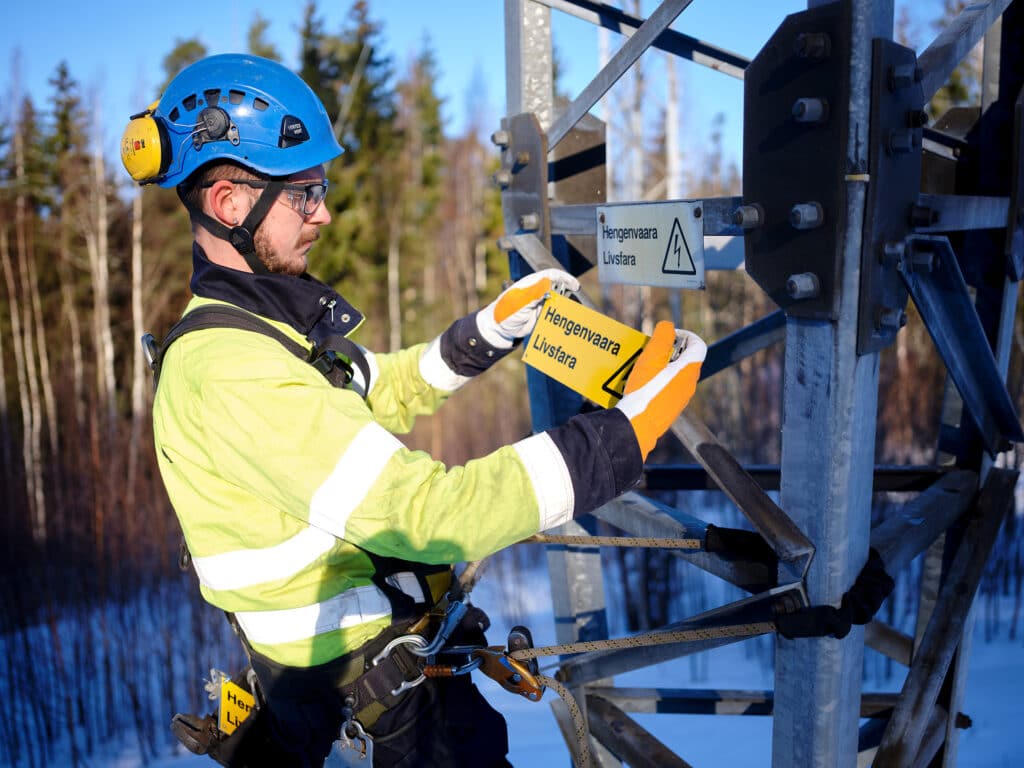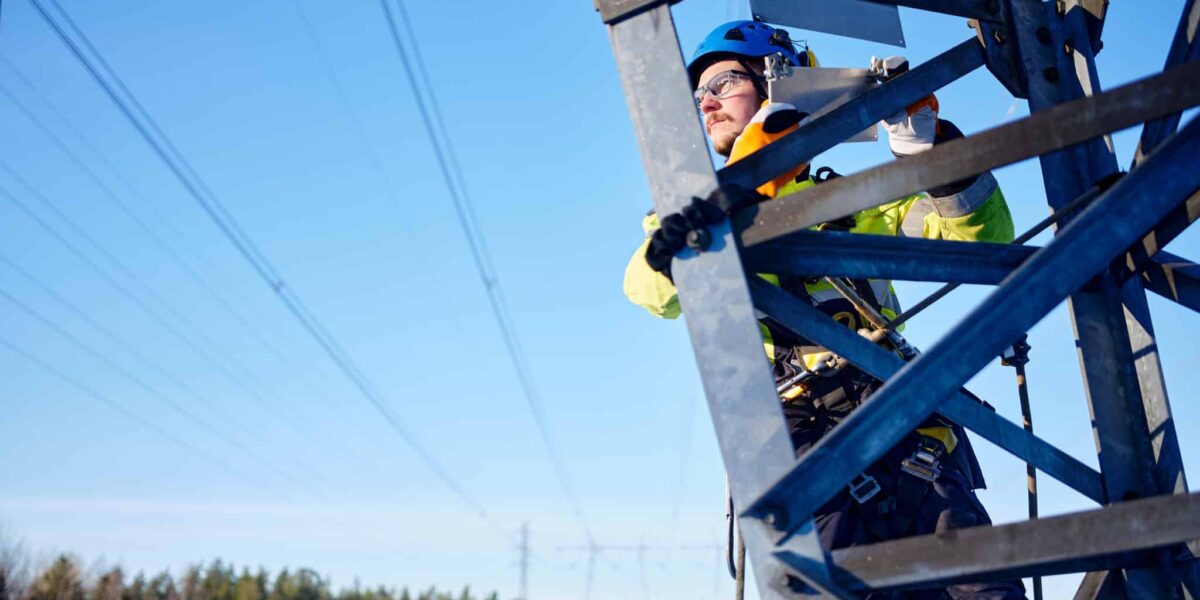On a cold winter’s morning, Power Lineman Petteri Konttinen opens Fingrid’s power line app to check his to-do list for the day. The app shows the locations where he will be working.
The first job of the day is to replace some detached warning signs. The journey begins in Rajamäki on the premises of Konttinen’s employer, Eltel Networks, a service provider for electricity and telecommunications networks.
Konttinen packs warning signs, fastening screws, a harness, safety goggles and a helmet. He may also pick up drilling screws, C-sleeves, bolts, clamps or lengths of copper wire for earthing. Binoculars are always in his toolbox.
Today will not be a very busy day. But some days are, as maintenance work can be carried out on any part of a line, from foundations to components mounted high on towers. Sometimes, an excavator or crane is called for. The work is diverse, and no two days are alike.
No specific vocational degree for the industry
The next thing on Konttinen’s list is to tighten the stay wires that support transmission line towers. Sometimes, he installs new stay wires. Konttinen learned this skill from more experienced colleagues.
Konttinen got into the industry by accident. Fresh out of college with a plumber’s qualification in hand, he could not find a job until he got talking to a neighbour at his holiday cabin. The neighbour was about to retire from Eltel and urged the young man to follow in his footsteps and become a transmission lineman.
“My neighbour was very convincing. I just had to go and see what the job was like,” says Konttinen.
There is no direct course of study leading to the job of transmission lineman. However, institutions such as Tampere Adult Education Centre offer courses relevant to the industry as further education.
Konttinen learnt to do the job in courses organised by Eltel and Fingrid. Eltel’s orientation includes online training and mandatory courses for linemen, such as safety, first aid and hot work courses. Linemen working for Fingrid must complete Fingrid’s online safety training and inspection licence training.

A fitness test is also required to confirm the worker’s physical and mental capacity — climbing up towers is an important part of a lineman’s work.
“The work requires arm and leg strength because you need to climb up towers with a harness quite often. Sometimes, it puts your whole body to the test. This job is not for people who are scared of heights,” says Konttinen.
The work is outdoors, and it is good if the lineman enjoys spending time alone in forests, for example. This has felt quite natural to Konttinen – he enjoys hunting and hiking, so outdoor pursuits are his thing.
In the winter, frost or snow can accumulate on earth wires, requiring a helicopter to come and remove them. Konttinen has not yet been on a helicopter, but he would like to try it.
“I have been doing this work for three years, and I enjoy it. I have nice colleagues – that is a big part of it.”
Transmission lineman must be willing to travel, as their work is needed all over Finland. Sometimes, they may need to spend a night away from home.
Konttinen says that he often works extra hours to take Fridays off in the summer and enjoy a long weekend. This is more difficult in the winter because the work cannot be done in the dark.
However, he has already banked a few additional hours. Konttinen packs his things in the afternoon and sets off to Hyvinkää, home in time for the weekend.




